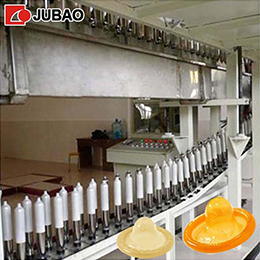In the realm of protective gear, nitrile gloves stand out for their versatility and durability. Crafting these essential accessories involves a sophisticated interplay of technology and precision. Let's delve into the fascinating journey of how nitrile gloves are made, exploring the inner workings of the nitrile glove machine and the intricate process of glove dipping.
Understanding the Basics: Nitrile Gloves
Nitrile gloves have become indispensable in various industries, from healthcare to manufacturing, owing to their superior strength, puncture resistance, and chemical resilience. Derived from synthetic rubber, nitrile gloves offer an excellent alternative to latex gloves for individuals with latex allergies. The manufacturing process of nitrile gloves involves several stages, each requiring meticulous attention to detail.
The Nitrile Glove Machine: Engineering Marvel
At the heart of nitrile glove production lies the nitrile glove machine, a marvel of engineering precision and automation. This sophisticated equipment orchestrates the entire manufacturing process with unparalleled efficiency. The machine comprises multiple stations, each dedicated to specific tasks such as dipping, drying, and quality control.

How Does the Nitrile Glove Machine Work?
The nitrile glove machine operates on a synchronized sequence of steps, seamlessly transforming raw materials into finished gloves. Here's a simplified breakdown of its functioning:
Preparation of Raw Materials: The process begins with the preparation of raw materials, including nitrile latex and additives. These ingredients are carefully mixed to achieve the desired formulation, ensuring optimal glove properties.
Dipping Station: The pre-formed glove molds are immersed into the nitrile latex solution at the dipping station. Precision and consistency are crucial at this stage to ensure uniform coating and thickness.
Curing Oven: After dipping, the gloves pass through a curing oven where they undergo vulcanization. This process imparts strength and elasticity to the gloves, enhancing their performance characteristics.
Leaching and Washing: Following curing, the gloves undergo leaching and washing to remove residual chemicals and impurities, ensuring product safety and quality.
Drying Chamber: The gloves are then transferred to a drying chamber where they are subjected to controlled heat and airflow. This step facilitates the evaporation of moisture, resulting in dry and comfortable gloves.
Quality Control: Throughout the manufacturing process, rigorous quality control measures are implemented to identify and rectify any defects or irregularities. This ensures that only high-quality gloves reach the market.
Packaging and Distribution: Once the gloves pass the quality assurance tests, they are packaged and prepared for distribution to various end-users, ranging from medical professionals to industrial workers.
The Role of Glove Dipping Machines in Nitrile Glove Production
Glove dipping machines play a pivotal role in the production of nitrile gloves, enabling precise and consistent coating of glove molds with the latex solution. These machines are equipped with advanced features such as programmable controls, adjustable dipping speeds, and automated monitoring systems. By streamlining the dipping process, glove dipping machines enhance productivity and minimize wastage, ensuring cost-effective manufacturing operations.
The manufacturing of nitrile gloves represents a perfect synergy of innovation, technology, and craftsmanship. From the intricate workings of the nitrile glove machine to the precision of glove dipping machines, every aspect of the production process is geared towards delivering superior quality gloves to meet the diverse needs of consumers worldwide. As industries evolve and challenges emerge, the quest for excellence in glove manufacturing continues, driving forward progress and innovation in protective gear technology.









